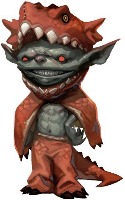Paladintodd said: The problem though is movement and measuring distance don't work when you do that. Measuring distance only seems to work from the middle of one square to the middle of the next. Echoing what William said in another section, if you subdivide the squares under page settings (in other words make smaller squares, or squares that are, say, .5 units each) then you can measure more accurately / more discrete measurement points. From what I'm gathering of your needs, and I could be wrong, but try this combination please: Page settings, make your grid smaller such as .5, and hide the grid using complete opacity. Token, drag it to larger using ALT key. Map, it sounds like you need square based movement (if you don't need to count squares then just keep them hidden). If you do need to count squares & don't like the small appearance of .5 squares, hide Roll20's squares using opacity and they'll be used just for Measurement Ruler tool and for anchor points where a token can set, but now draw a visual grid on your map pixels (such as in your graphics program or using drawing tool) only to represent the squares at the movement-level of the game you're playing. Sorry this is hard to explain, trying to make the best words for it. Basically you have a ton of flexibility here once you get the feel for the push-and-pull of the settings you can adjust and layer in different ways. Basically trying to say you can have 2 grids, the actual Roll20 skeletal structural grid (which can be hidden) and you could have a grid drawn on your map if you need one "showing" at a larger scale while having Roll20's underlying grid set to a more discrete / small-steps scale (allowing for more accurate Ruler tool work). EDIT: P.S. Also I'm not saying Roll20 can't be improved, your suggestions are valid. Just saying there are ways of accomplishing a similar effect in Roll20, or at least ways of getting any map scale that you want (if you have a high enough resolution background image).








